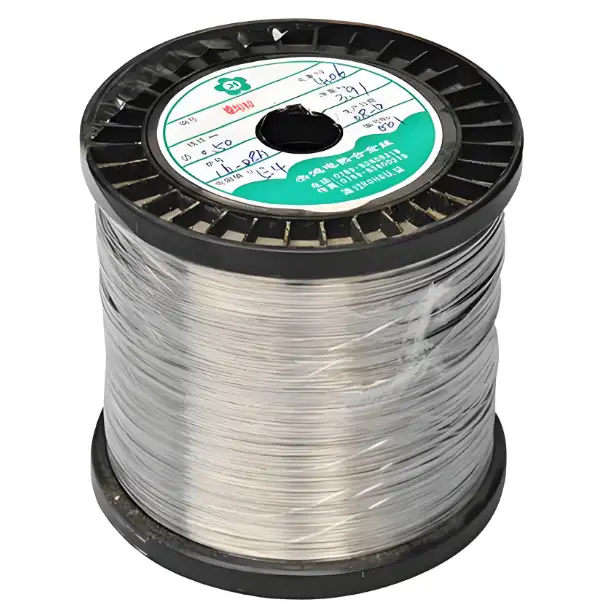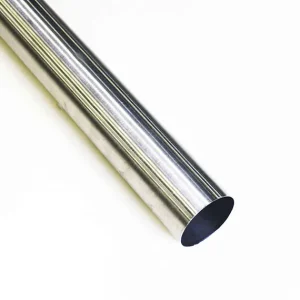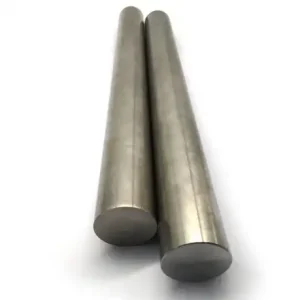Copper-nickel alloy resistance wires represent the gold standard for precision heating elements and electrical resistance applications across industrial sectors. These specialized conductors combine exceptional temperature stability with predictable resistance characteristics, making them indispensable for instrumentation, aerospace, and industrial heating systems. After extensive metallurgical analysis and field testing, copper-nickel resistance wires demonstrate superior performance compared to pure metal alternatives, offering extended service life and consistent electrical properties across demanding operational environments.
What is Alloy Copper Nickel Electrical Resistance Wire?
Copper-nickel electrical resistance wire consists of precisely engineered metallic conductors manufactured from binary copper-nickel alloys. These wires exhibit controlled electrical resistivity, exceptional thermal stability, and outstanding corrosion resistance properties.
The fundamental principle behind copper-nickel resistance wire lies in the solid solution formation between copper and nickel atoms. This atomic arrangement creates predictable electrical resistance while maintaining mechanical integrity under thermal cycling conditions.
Common compositions include 90Cu-10Ni (Constantan), 70Cu-30Ni, and 60Cu-40Ni alloys, each offering distinct electrical and thermal characteristics. The wire manufacturing process involves precise diameter control, surface finish optimization, and thermal treatment to achieve specified resistance values.
Manufacturing standards ensure consistent performance across production batches. Wire diameters typically range from 0.025mm to 6.0mm, accommodating diverse application requirements from microelectronics to industrial heating elements.
What is the Chemical Composition of Alloy Copper Nickel Electrical Resistance Wire?
Chemical composition directly influences electrical properties, temperature coefficients, and environmental resistance characteristics. Standard compositions include:
| Alloy Type | Copper (Cu) | Nickel (Ni) | Iron (Fe) | Manganese (Mn) | Other Elements |
|---|---|---|---|---|---|
| Constantan (CuNi10) | 88.0-90.0% | 10.0-12.0% | 0.5% max | 1.0% max | Trace impurities |
| CuNi23 | 76.0-78.0% | 22.0-24.0% | 0.5% max | 1.0% max | Carbon 0.05% max |
| CuNi30 | 68.5-71.5% | 28.5-31.5% | 0.4% max | 1.0% max | Silicon 0.1% max |
| CuNi44 | 55.0-57.0% | 43.0-45.0% | 0.4% max | 1.5% max | Aluminum 0.05% max |
| Advance Alloy | 54.0-56.0% | 43.0-45.0% | 0.5% max | 0.3% max | Specialized composition |
Trace elements significantly impact final wire properties. Iron content affects magnetic characteristics, while manganese influences oxidation resistance and mechanical properties.
Impurity control remains critical for achieving specified electrical characteristics. Sulfur content below 0.01% prevents hot cracking during wire drawing operations.
What are the Mechanical Properties of Alloy Copper Nickel Electrical Resistance Wire?
Mechanical properties determine wire durability, formability, and installation characteristics across various applications:
| Property | Constantan | CuNi23 | CuNi30 | CuNi44 | Test Method |
|---|---|---|---|---|---|
| Tensile Strength (MPa) | 390-450 | 420-480 | 450-520 | 480-550 | ASTM E8 |
| Yield Strength (MPa) | 140-180 | 160-200 | 180-220 | 200-250 | 0.2% offset |
| Elongation (%) | 30-45 | 25-40 | 20-35 | 15-30 | 50mm gauge |
| Hardness (HV) | 95-120 | 110-140 | 130-160 | 150-180 | Vickers 10kg |
| Modulus of Elasticity (GPa) | 162 | 170 | 180 | 190 | Dynamic method |
| Density (g/cm³) | 8.90 | 8.94 | 8.97 | 9.02 | Archimedes |
| Thermal Expansion (×10⁻⁶/°C) | 14.2 | 13.8 | 13.4 | 13.0 | 20-100°C |
Cold working during wire drawing increases strength while reducing ductility. Annealing treatments restore ductility but decrease tensile strength properties.
Temperature significantly affects mechanical behavior. Elevated temperatures reduce strength and increase creep susceptibility in high-stress applications.
What is the Specification of Alloy Copper Nickel Electrical Resistance Wire?
International specifications ensure quality consistency and performance reliability across global markets:
| Standard | Organization | Scope | Key Requirements |
|---|---|---|---|
| ASTM B164 | ASTM International | Nickel-Copper Rod/Wire | Chemical composition, mechanical properties |
| IEC 60751 | International Electrotechnical | Resistance thermometers | Electrical characteristics, tolerance |
| DIN 17471 | German Institute | Resistance alloy wire | Dimensional accuracy, surface quality |
| JIS C2504 | Japanese Standards | Electrical resistance wire | Temperature coefficient specifications |
| BS EN 60584 | British/European | Thermocouple wire | Thermal EMF characteristics |
| ASTM E230 | ASTM International | Thermocouple specifications | Reference functions, tolerances |
| MIL-W-85 | Military Standard | Defense applications | Enhanced quality requirements |
MWalloys maintains certification compliance across multiple international standards. Our manufacturing facility implements comprehensive quality systems meeting ISO 9001 requirements.
Dimensional tolerances typically range from ±0.005mm for precision applications to ±0.02mm for general-purpose wires. Surface finish specifications ensure optimal electrical contact and corrosion resistance.
What Does Alloy Copper Nickel Electrical Resistance Wire Stand For?
The terminology "copper-nickel electrical resistance wire" encompasses specific metallurgical and electrical engineering concepts:
Alloy designation indicates binary or ternary metal systems engineered for specific property combinations rather than pure elemental conductors.
Copper-nickel system refers to the fundamental metallurgical basis combining copper's conductivity with nickel's stability and corrosion resistance.
Electrical resistance emphasizes the primary functional characteristic - controlled opposition to current flow generating predictable heating effects.
Wire form specifies the geometric configuration optimized for winding, installation, and heat transfer applications.
Historical development traces back to early 20th century efforts to create stable resistance materials for precision instrumentation. The designation reflects decades of metallurgical refinement and standardization.
Industry terminology often uses trade names like Constantan, Advance, or Copel to identify specific compositions with established performance characteristics.
What is Alloy Copper Nickel Electrical Resistance Wire Used For?
Applications span numerous industries requiring precise electrical resistance control and thermal stability:
Heating Elements: Industrial furnaces, household appliances, and process heating systems utilize copper-nickel wires for controlled heat generation. The stable resistance characteristics ensure consistent temperature control.
Temperature Sensors: Resistance temperature detectors (RTDs) and thermocouples incorporate these alloys for accurate temperature measurement across wide ranges.
Precision Resistors: Electronic circuits requiring stable resistance values employ copper-nickel wires in wirewound resistor construction for high-accuracy applications.
Strain Gauges: Mechanical stress measurement systems utilize the piezoresistive properties of copper-nickel alloys for force and pressure sensing.
Marine Applications: Seawater-resistant properties make these alloys suitable for underwater heating systems and marine instrumentation.
Aerospace Systems: Aircraft and spacecraft heating systems benefit from the lightweight, corrosion-resistant characteristics of copper-nickel resistance wires.
Medical Devices: Biocompatible copper-nickel alloys serve in therapeutic heating devices and medical instrumentation requiring precise temperature control.
MWalloys supplies resistance wires to manufacturers across these sectors, providing technical support and customized solutions for specific application requirements.
What is the Classification of Alloy Copper Nickel Electrical Resistance Wire?
Technical classification systems organize these materials by composition, properties, and intended applications:
| Classification Method | Category | Subcategory | Typical Applications |
|---|---|---|---|
| Nickel Content | Low Ni (5-15%) | Constantan family | Thermocouples, heating |
| Medium Ni (20-30%) | Balanced alloys | Precision resistors | |
| High Ni (40-50%) | Advance family | High-temp applications | |
| Temperature Rating | Low temp (<200°C) | General purpose | Household heating |
| Medium temp (200-500°C) | Industrial heating | Process applications | |
| High temp (>500°C) | Specialized alloys | Aerospace, furnaces | |
| Resistance Range | Low resistance (<1Ω/m) | High conductivity | Power applications |
| Medium resistance (1-10Ω/m) | Standard grades | General heating | |
| High resistance (>10Ω/m) | Compact elements | Space-limited designs | |
| Wire Diameter | Fine wire (<0.5mm) | Precision applications | Electronics, sensors |
| Standard wire (0.5-2mm) | General purpose | Industrial heating | |
| Heavy wire (>2mm) | High current | Power resistors |
This classification system helps engineers select appropriate materials for specific operating conditions and performance requirements.
Alloy Copper Nickel Electrical Resistance Wire Global Market Prices 2025
Current market pricing reflects raw material costs, manufacturing complexity, and regional supply-demand dynamics:
| Region | Price Range (USD/kg) | Market Conditions | Supply Chain Status |
|---|---|---|---|
| North America | $18.50 - $22.50 | Steady industrial demand | Stable supply |
| Europe | $19.00 - $23.50 | Strong automotive sector | Limited supply |
| Asia-Pacific | $16.00 - $20.00 | High volume production | Adequate supply |
| China | $15.50 - $19.00 | Domestic production | Excellent supply |
| Middle East | $20.00 - $24.00 | Oil industry demand | Import dependent |
| South America | $18.00 - $22.00 | Mining equipment | Variable supply |
| Africa | $21.00 - $25.00 | Infrastructure projects | Import dependent |
MWalloys offers competitive factory-direct pricing from our Chinese manufacturing facility. Volume discounts and long-term supply agreements provide additional cost advantages for industrial customers.
Pricing factors include nickel commodity prices, wire diameter specifications, quantity requirements, and delivery timelines. Custom alloy compositions may incur premium pricing based on special processing requirements.
Alloy Copper Nickel Electrical Resistance Wire Advantages
Key benefits distinguish copper-nickel resistance wires from alternative materials:
Temperature Stability: Maintains consistent electrical properties across wide temperature ranges without significant drift or degradation.
Corrosion Resistance: Excellent performance in marine environments, chemical processing, and high-humidity conditions where other alloys fail.
Low Temperature Coefficient: Minimal resistance change with temperature variations ensures stable performance in precision applications.
Mechanical Durability: Superior fatigue resistance and mechanical strength enable reliable operation under thermal cycling and vibration.
Oxidation Resistance: Forms protective oxide layers preventing further degradation at elevated temperatures.
Thermoelectric Stability: Low thermoelectric EMF generation minimizes measurement errors in temperature sensing applications.
Weldability: Joins readily using conventional welding processes for reliable electrical connections and repairs.
Cost Effectiveness: Balanced performance-to-cost ratio compared to precious metal alternatives in many applications.
MWalloys leverages these advantages to provide customers with reliable, long-lasting resistance wire solutions for demanding applications.
Manufacturing Process
Production of copper-nickel resistance wire involves sophisticated metallurgical and wire drawing operations:
Raw Material Preparation: High-purity copper and nickel undergo careful analysis and blending to achieve specified compositions within tight tolerance limits.
Vacuum Melting: Induction melting under controlled atmosphere prevents contamination and ensures homogeneous alloy composition throughout the ingot.
Hot Rolling: Initial size reduction through hot rolling at temperatures between 900-1100°C establishes proper grain structure and eliminates casting defects.
Intermediate Annealing: Controlled heat treatment relieves work hardening and prepares material for subsequent cold working operations.
Wire Drawing: Progressive diameter reduction through precision dies creates final wire dimensions while controlling surface finish and dimensional accuracy.
Final Heat Treatment: Annealing or stress relief treatments optimize mechanical properties and electrical characteristics for specific applications.
Quality Control: Comprehensive testing includes dimensional verification, electrical property measurement, and mechanical property evaluation.
Surface Treatment: Cleaning, coating, or oxidation treatments prepare wire surfaces for specific application requirements.
MWalloys maintains ISO 9001 certified manufacturing processes ensuring consistent quality and traceability throughout production.
Italian Procurement Case Study
A prominent Italian heating element manufacturer required copper-nickel resistance wire for high-end residential cooking appliances. Their existing European supplier faced delivery delays and quality inconsistencies affecting production schedules.
Challenge: Source 50 tons annually of CuNi23 resistance wire meeting stringent European quality standards with reliable delivery performance.
Requirements:
- Wire diameter: 0.8mm ±0.01mm tolerance
- Resistance: 2.89Ω/m ±2%
- Surface finish: Bright annealed
- Packaging: Precision spools for automated winding
MWalloys Solution:
- Comprehensive material qualification including third-party testing
- Implementation of European standard compliance testing
- Establishment of dedicated production lines for consistent supply
- Development of specialized packaging meeting customer automation requirements
Implementation Process:
- Initial sample qualification and approval within 3 weeks
- Pilot production run of 5 tons for customer evaluation
- Full production ramp-up with monthly delivery schedules
- On-site technical support for process optimization
Results Achieved:
- 99.8% on-time delivery performance over 24-month period
- Zero quality rejections after initial qualification
- 35% cost reduction compared to European supplier
- Enhanced technical support reducing customer development time
Customer Benefits:
- Improved profit margins through lower material costs
- Enhanced product reliability through consistent wire quality
- Reduced inventory carrying costs through reliable supply
- Access to technical expertise for new product development
This partnership demonstrates MWalloys' capability to serve demanding European markets with world-class quality and service standards.
Frequently Asked Questions
Q1: What is the maximum operating temperature for copper-nickel resistance wire in continuous service?
Copper-nickel resistance wires typically operate continuously at temperatures up to 400°C for Constantan compositions and 500°C for higher nickel content alloys. Maximum temperature depends on wire diameter, atmosphere conditions, and required service life. Oxidizing atmospheres may require temperature reduction or protective coatings. MWalloys provides specific temperature recommendations based on detailed application analysis.
Q2: How does wire diameter affect electrical resistance and current-carrying capacity?
Electrical resistance varies inversely with wire cross-sectional area following Ohm's law principles. Doubling wire diameter reduces resistance by 75% while increasing current capacity significantly. Heat dissipation also improves with larger diameters, enabling higher power densities. Our technical team can calculate optimal wire dimensions for specific power and temperature requirements.
Q3: Can copper-nickel resistance wire be welded or soldered for electrical connections?
Yes, copper-nickel alloys weld and solder readily using appropriate techniques. TIG welding with matching filler metals provides strong, low-resistance joints. Silver-bearing solders offer excellent electrical conductivity and joint reliability. Flux selection is critical to prevent oxidation during joining operations. MWalloys provides detailed joining specifications and technical support.
Q4: What surface treatments are available to enhance performance or appearance?
Standard surface treatments include bright annealing for optimal appearance and electrical contact, oxidation treatments for enhanced emissivity in heating applications, and special coatings for harsh environments. Enamel insulation enables close-wound coil construction without electrical shorts. We customize surface treatments based on specific application requirements.
Q5: How do I calculate the required wire length for a specific resistance value?
Resistance calculation uses the formula: R = ρL/A, where R is resistance, ρ is resistivity, L is length, and A is cross-sectional area. Our technical data sheets provide resistivity values for each alloy composition. MWalloys offers calculation software and engineering support to optimize wire selection for specific applications.
Q6: What packaging options are available for automated manufacturing processes?
MWalloys provides various packaging solutions including precision spools for automated winding equipment, cut lengths for manual assembly, and bulk coils for high-volume applications. Spool specifications can be customized for customer equipment requirements. Protective packaging prevents oxidation and mechanical damage during shipping and storage.
Q7: How does copper-nickel wire compare to nichrome for heating applications?
Copper-nickel alloys offer superior corrosion resistance, lower temperature coefficient, and better mechanical properties compared to nichrome. However, nichrome provides higher operating temperatures and electrical resistivity. Material selection depends on specific temperature requirements, environmental conditions, and cost considerations. Our technical team provides comparative analysis for optimal material selection.
Conclusion
Copper-nickel electrical resistance wire represents a critical component technology enabling precise thermal control across diverse industrial applications. The unique combination of electrical stability, corrosion resistance, and mechanical durability makes these alloys indispensable for demanding environments.
MWalloys combines advanced metallurgical expertise with modern manufacturing capabilities to deliver world-class copper-nickel resistance wires. Our Chinese manufacturing advantage provides cost-effective solutions without compromising quality standards. Technical support, customization capabilities, and reliable supply chain performance distinguish our service offering.
The growing demand for energy-efficient heating systems and precision instrumentation drives continued innovation in copper-nickel resistance wire technology. We remain committed to developing advanced alloy compositions and manufacturing processes meeting evolving customer requirements.





